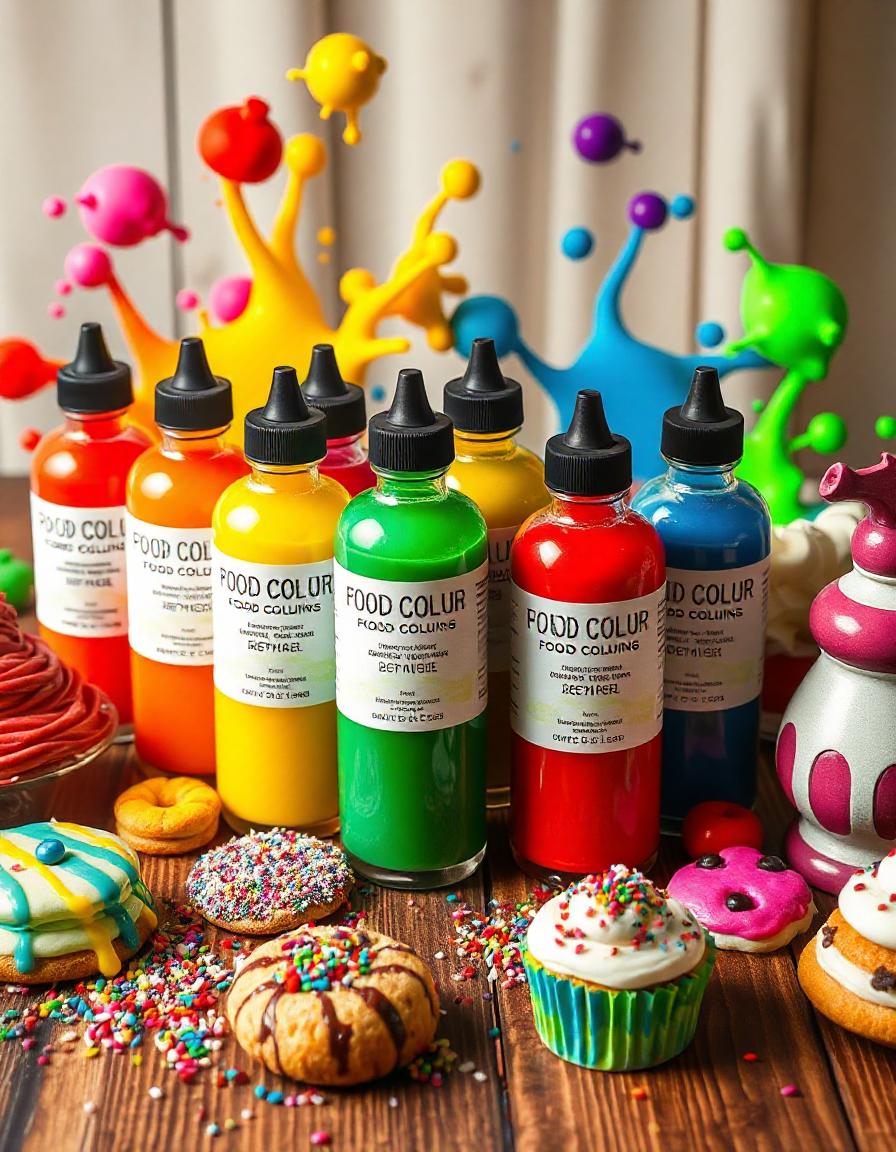Welcome to the colorful world of confectionary items and food! Have you ever wondered why your favorite treat is so bright? Well, except for the aesthetic value, food coloring has a rather interesting role in our flavor experience and even in meal appearance. Let’s jump into the science of food coloring, where we’ll see just how these vibrant colors can even have an impact on your taste buds or dining experience.
The Science Of Food Coloring
While food coloring is viewed as just a cosmetic touch to the food, it is a packed science tool that alters how we come across food. Food coloring fundamentally works by adding pigments to our meals, which could either be from natural sources like fruits and vegetables or synthesized in a lab. These added pigments are designed to make food more appealing, but they end up having a surprising impact on our sensory experience.
The Psychology of Color
The colors that we see on our plates do more than just appeal to our eyes; research has shown that they affect how food tastes and how it is perceived. Here, we take a closer look at some of the ways that different colors can influence our dining experience:
Red: Energetic and Sweet
Red is a color that’s often associated with excitement and stimulation. In the world of food, it’s used to increase the perception of sweetness. Just think about strawberries or tomatoes, for example—this color just makes you believe the fruit will be juicy and sweet. Research showed that consumers do perceive red foods as sweeter, and they might not even be sweet—all thanks to the color.
Yellow and Orange: Bright and Citrusy
Yellow and orange colors give us a feeling of warmth and cheer. These two colors are deeply associated with the tangy taste of citrus and sweetness. That is why most lemon-flavored food looks bright yellow. Very dynamic taste comes through the yellowness in colors, so that we enhance our total flavor experience.
Green: Fresh and Healthy
Green, on the other hand, relates to all that is fresh and healthy. Vegetables, herbs, and fruits bear green coloration most of the time because it indicate their natural wholesomeness. When we see green, our minds naturally link this color with fresh, crisp flavors. Equally, this color can make foods appear healthy, thus affecting our choices and perceptions toward taste.
Blue and Purple: Mysterious and Rare
Since very few natural foods are blue and purple, their presence is usually enchanting. The colors are then used to create the feeling of foreignness and surprise. To an average human being, blue food might look funny, but it also gives a sense of experimentation and excitement toward tasting it.
What’s more, the very fact that these natural food colorants are rare makes us much more sensitive to the taste profile in most cases; it enhances our taste experience as best as possible.
The Power of Perception: How Color Affects Taste
There is more to perception: the effect of color on taste. It’s not just how food looks, though; it can change the way we taste foods. It is an example of how our senses work together. For example, if one is given a red drink that is lemon-flavored, they might perceive that the flavor is sweeter because their brain had expected something sweet to go along with the color red.
Similarly, participants were more likely to describe a drink as flavorful when its color was congruent with its flavor. For example, if a drink was green, it was refreshing; if brown, then it was rich. The colors set our expectations and can even influence our taste buds; that shows us how interconnected our senses are.
The Art of Food Presentation: Making Meals More Enjoyable
Food colorants have been frequently used by chefs and food developers to make dishes more appealing to the eyes. What is generally at stake here is not just the appearance but also offering a multisensory experience: the right colors can increase the general enjoyment of a meal because they will enhance our taste expectations, and finally shape one’s memory.
CONCLUSION
EFA is excited to bring you Vibgyors candy food coloring, the perfect way to add a splash of color to your culinary masterpieces! With Vibgyor, you can let your imagination run wild and transform every treat into a visual delight. So grab your favorite shades and start creating beautiful, colorful memories in the kitchen!

